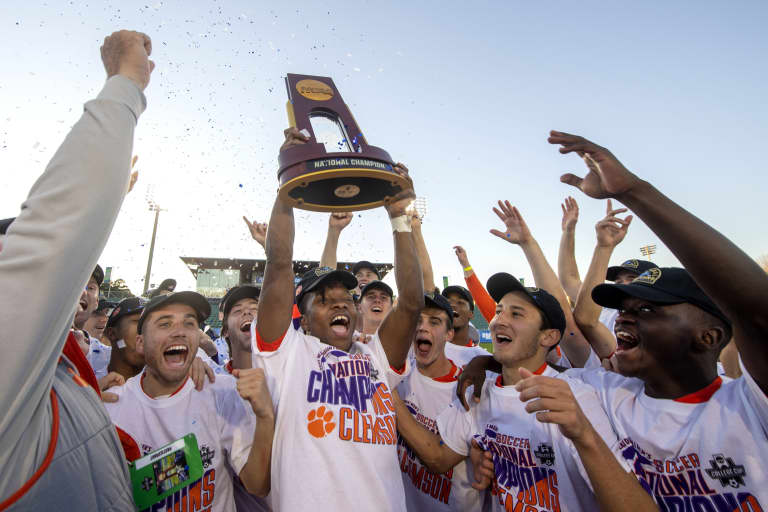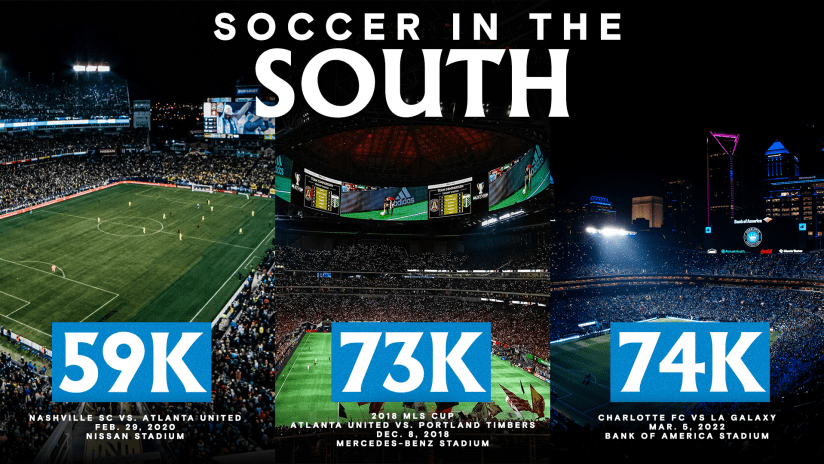The Southeast. Home of sweet tea, biscuits, NASCAR, and... soccer?
Yes, you read that correctly, soccer. In the modern United States soccer landscape, the Southeast has become a hotbed for the beautiful game.
Within the past 7 years, five out of the past ten expansion teams added in Major League Soccer have been from the Southeast: Orlando, Atlanta, Miami, Nashville, and Charlotte.
In their short histories, these teams have already made waves across the country and world both on and off the pitch. Whether it’s through the loyalty of their fanbases, winning trophies, or having viral redneck moments, the Southeast has made soccer headlines.
The lifeblood of a club is its fans and the fans in the region have made it known that they are soccer enthusiasts. Four out of the five MLS clubs mentioned have drawn crowds of over 50,000 people, with Miami being the lone one out because they don’t have a stadium that can hold that many.
Nashville drew 59,069 in their inaugural home opener, Orlando’s biggest match was 62,510 in the citrus bowl, Atlanta’s highest amount was 73,019 in their MLS Cup Final appearance, and most recently Charlotte broke the all-time record with the 74,479 home crowd in their home opener this season.

To outsiders this may be surprising but to anyone living in the region or paying attention to it... it’s completely expected. The southeast has had a rich soccer culture long before MLS arrived.
Organized professional soccer has existed in the region since the 1960s. Atlanta had the Atlanta Chiefs in 1967, Florida had the Tampa Bay Rowdies (different from the current Tampa Bay Rowdies team) in 1974, North Carolina’s first professional team was the Carolina Lightnin’ in 1981 which was based out Charlotte, and in 1993 the Charleston Battery were introduced to South Carolina.
Since then, professional soccer clubs have popped up at every level of the U.S. Soccer pyramid, today totaling to 16 different independent, professional clubs operating in the region.
But the love for the game that continues to grow exponentially with every year isn’t all due to the professional scene. In fact, one could argue the bigger driving force of this growth comes from the strong non-professional youth soccer infrastructure throughout the region.
As early as two years old, through programs such as Soccer Shots in North Carolina, children can get involved in organized soccer. And as the children get older, the more and more opportunities they have to continue playing the sport.
Private soccer academies like the one I was personally apart of, Triangle Fútbol Club along with the endless amount of REC soccer leagues, give choices to both kids and teens to play the sport whether it’s casually or competitively.
The collegiate soccer system has directly benefited from this by not only having a plentitude of athletes to recruit from but also quality players in general. We’ve seen how competitive collegiate has become in the region in all divisions.
Programs like UNC Chapel Hill, Duke, Wake Forest, and the 2022 NCAA National Champions, Clemson, are all considered elite. While the MLS teams are still relatively new, the southeast has been excelling in soccer at all levels.

For all these reasons, the southeast’s MLS soccer scene was primed to explode if given the chance. The chance came and the southeast made statements with massive attendance records that were byproducts of a region craving the sport at the highest domestic level.
Evidence that not only does professional soccer work in the southeast, but it thrives and contributes to raising the bar for the entirety of soccer in the country. The southeast has been the sleeping soccer giant that has finally been awoken.















